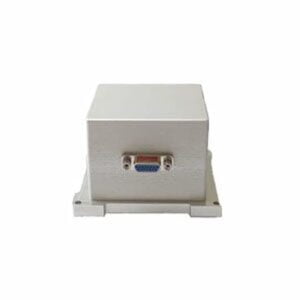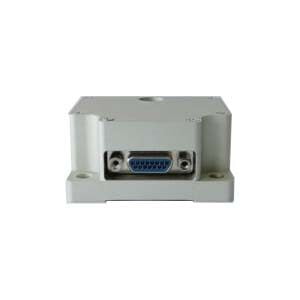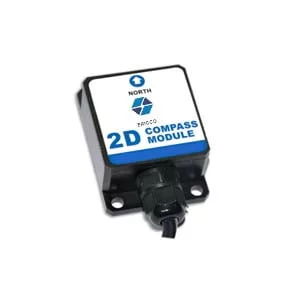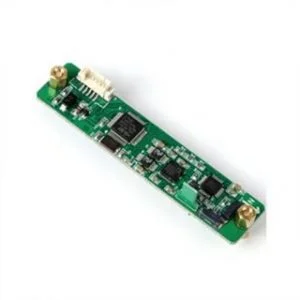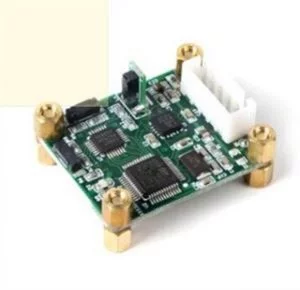As an inertial system, north finder has its own characteristics, it is not affected by weather, magnetic interference and other external interference, so it has been widely used in both military and civilian applications. Sensors based on inertial technology are considered to be the most robust and reliable north finding method, traditional gyro north finder mostly uses high-precision gyroscopes, such as mechanical gyroscopes, ring laser gyroscopes, fiber optic gyroscopes, etc., they can achieve high precision, however, most of them are very heavy, high power consumption, large volume, relatively expensive. Their high cost, large size and high power consumption limit their application in areas such as individual navigation. The current gyro north finder usually uses an inertial measurement unit (gyro and accelerometer), on the basis of which a north finding algorithm is added to find the north.
The ability to seek true north accuracy is critical to determining the direction of ground vehicles, sea and air. The theodolite is primarily used in measurement applications for measuring angles, however, point-by-point transmission from outside to inside through the theodolite requires many experts and is a complex process. In this paper, we propose a high-precision and compact north finder based on microelectromechanical system (MEMS) gyroscope and accelerometer sensors for batch direction marking.
In modern society, electronic compasses and GPS technology are the most popular choices, often used in navigation applications. But use has shown that electronic compasses and GPS-based technology are not suitable for permanent directional marking. In addition, electromagnetic interference and iron-containing materials can reduce the heading accuracy of a digital compass. At the same time, GPS signals are susceptible to interference in geographical locations, complex landscapes, and harsh weather conditions. It is safe to say that electronic compass and GPS technology cannot be used if the goal is to find and mark accurate directions in different geographical situations.
1.The product advantages of MEMS north finder
Compared with traditional gyroscopes, MEMS gyroscopes have the advantages of low cost, small size, low power consumption, and high robustness. It does not use rotating parts of bearings, so miniaturization can adapt to small PCB.The MEMS gyroscopes use the Coriolis force effect on vibrating mechanical components to detect the speed of the earth's angular rotation. MEMS northfinder can provide accurate readings that can be applied in the automotive, industrial, medical, and mobile device industries. As MEMS north seeker technology gradually moves toward commercialization, production costs are expected to decrease further.
2.Static north finding model
Static northfinding is based on the principle of discrete rotational modulation. The coordinate system is defined as follows: traditional geocentric Earth fixed coordinate system, e coordinate system; The gyroscope and accelerometer are composed of the measuring coordinate system m-frame. The north-seeking coordinate system is represented by the main coordinate system, b coordinate system; The navigation coordinate system N-coordinate system is the ideal local horizontal E-N-U (East-north-up) geodetic coordinate system. The coordinate system definition is shown in Figure 1. In Figure 1, L and λ represent the Earth's latitude and longitude, and ωie and ωN represent the Earth's rotation rate and its northern projection in the n coordinate system. Acc stands for accelerometer and Gyro stands for gyroscope. ISA stands for Inertial Sensor Assembly.
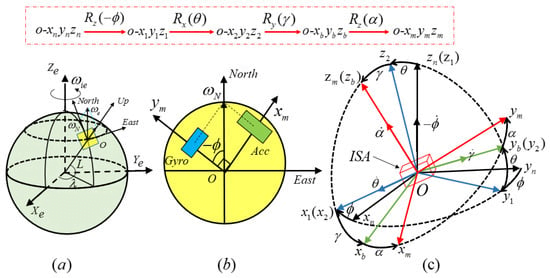
b frame diagram is obtained from n frame by 3 euler angle transformations (heading angle ?, pitch angle θ, roll angle γ). The heading angle is defined as [0°,360°] and measured clockwise from north. Pitch and roll angles are defined as [−90°,90°], which follow the right hand rule. The m coordinate system can be obtained by rotating the angle α about the z axis of the b coordinate system. The conversion process is shown in Figure 1c.
3. The realization of inertial sensor performance
For the proposed MEMS gyro north finder, the heading accuracy can be described as:

Oheading is the heading accuracy, Ogyro and Oacc are caused by the heading error, Oother are caused by other sources of heading error. The accuracy of the gyroscope directly determines the accuracy of the north finder. Gyroscopic errors (including ARM, G-sensitivity) affect the accuracy of the heading. For tiny values of the earth's rotation rate, any other smiley error can cause measurement errors. These issues should also be handled with care to ensure that their impact is within a certain level.
For the static north seeking scheme, the heading error caused by the gyroscope mainly depends on the latitude L, the required alignment time Ta and the Angle random walk (ARW) of the gyroscope, as shown in the following formula
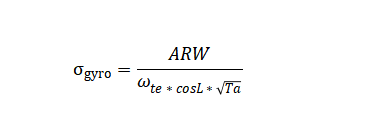
The above equation can be used as a criterion for gyroscope selection, the gyroscope ARM requirements are related to the desired alignment time Ta and the gyroscope heading accuracy and latitude L. In order to achieve a heading accuracy of 1°, if the required alignment time is 5min, then ARM of the desired gyroscope should be better than 0.058°/√hr, and the above discussion is only a simplified analysis considering the main error sources of the gyroscope. In fact, in order to achieve the designed course accuracy, it is necessary to consider the G-sensitivity and temperature error of the gyroscope.
Summary
The MEMS technology in north finder is maturing, gradually getting rid of the awkward situation of low precision and moving towards medium and high precision. Ericco continues to explore in the north finding series, studying how to give full play to the maximum advantages of performance and function, not only developed the most cost-effective MEMS north finder ER-MNS-05 and the world's smallest size north finder ER-MNS-06, but also a special three-axis MEMS north finder ER-MNS-09. This is not only a breakthrough in conventional size and volume, but also an advance in performance parameters, if you are interested, you can discuss it with us.
More Technical Questions
1.Effective combination of north finder and spacecraft based on autonomous orientation
2.Research on downhole north seeker
3.Research on orthogonal monitoring technology of north finder
4.Modeling and filtering in signals collected by FOG north seekers
5.Error Modeling and Compensation Analysis of North Finder Based on FFT
6.Research and use of north finder for mining drilling rigs
Products in Article
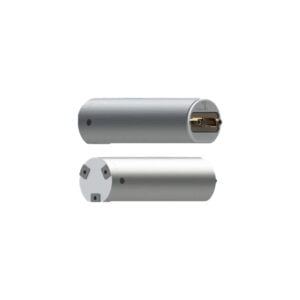 MEMS Triaxial North Seeker for Mining
MEMS Triaxial North Seeker for Mining